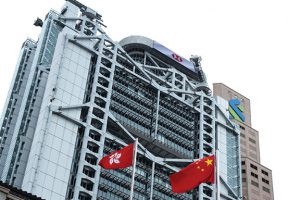Bloomberg
HSBC Holdings Plc shares rise after it delivered better-than-estimated profits and pledged to return to paying quarterly dividends next year as it seeks to head off a call by its largest shareholder to split up.
Helped by rising interest rates and a jump in income from currency trading, adjusted pretax profits rise 13% to $5.97 billion in the second quarter, according to a statement from the London-based bank. The bank was expected to post a profit of $4.96 billion in a Bloomberg analysts survey.
“The progress that we’ve made growing and transforming HSBC means we are in a strong position as we enter the current rates cycle,†Chief Executive Officer Noel Quinn said. “We are confident of achieving a return on tangible equity of at least 12% from 2023 onwards, which would represent our best
returns in a decade.â€
HSBC said it will seek to restore its quarterly dividend by next year, a key move to satisfy demands from its Hong Kong investor retail base. In April, it emerged that HSBC’s biggest individual shareholder, China’s Ping An Insurance Group Co., was pressing HSBC to carve out its Asian unit as a standalone business that it has argued would provide investors with a purer investment in the region’s growth.
Ping An has yet to make any public comment and instead has preferred to operate a behind-the-scenes campaign aimed at amping up pressure on HSBC to revise its strategy. HSBC has hired advisers from Goldman Sachs Group Inc. and Robey Warshaw to do a review of its business to rebut Ping An’s call.
In an interview with Bloomberg Television, HSBC Chief Financial Officer Ewen Stevenson said it’s hard to find value for shareholders in a
potential split. HSBC intends to revert to paying quarterly dividends in 2023, though said it’s expected to initially be reinstated at a lower level than the historical quarterly dividend of $0.10 a share paid up to the end of 2019. The lender said its revenue outlook “remains positive,†and it expected costs rise about 2% in 2023.
The results come after HSBC reported first-quarter results in April that led it to say that further share buybacks were unlikely this year as it warned of a drop in its core capital ratio due to regulatory changes and a hit on its interest rate hedge.
HSBC is in the midst of its own turnaround that is focused on building up its position in Asia, particularly in wealth management, while culling operations no longer deemed relevant. The bank has already sold off units in the US, France and Greece, and recently said it would be selling its remaining operations in Russia.
Fresh job cuts could be on the cards at the bank. Stevenson said rising inflation meant “very material action†was needed to keep a lid on expenses and that automation would most likely lead to reductions. “Inevitably over time as the pace of digitisation and automation increases we will see fewer staff,†Stevenson said in a phone interview.
on Monday with Bloomberg News.
HSBC said operating expenses were stable in the quarter and all regions were profitable in the first half. It booked expected credit losses of $1.1 billion in the first half, citing “heightened economic uncertainty and inflation.†Its common equity tier 1 ratio, a sign of financial strength was 13.6%, decreasing by 2.2 percentage points from six months ago.
Top of HSBC’s concerns for credit losses is the downturn in the Chinese property sector that has already cost the bank hundreds of millions in charges against potential defaults among borrowers. It took $142 million of expected credit losses related to China’s commercial real estate sector in the second quarter, adding to the $160 million charge set aside in the first quarter.
“We do think we are going to see some further impairments in the second half in that portfolio,†Stevenson said in his Bloomberg Television interview.
Analysts at Jefferies International said the figures were a “solid set of results,†pointing in particular to HSBC’s guidance on income and costs next year.
HSBC’s 2023 net interest-income guidance of at least $37 billion — some 6% above consensus and 70% driven by rate and margin increases — is the key takeaway from a strong set of 2Q earnings. A 2 percentage-point increase in the 2023 return-on-tangible-equity goal to 12%, with only a 2% increase in costs flagged for 2023 and 50% payouts, all bode well.
 The Gulf Time Newspaper One of the finest business newspapers in the UAE brought to you by our professional writers and editors.
The Gulf Time Newspaper One of the finest business newspapers in the UAE brought to you by our professional writers and editors.
